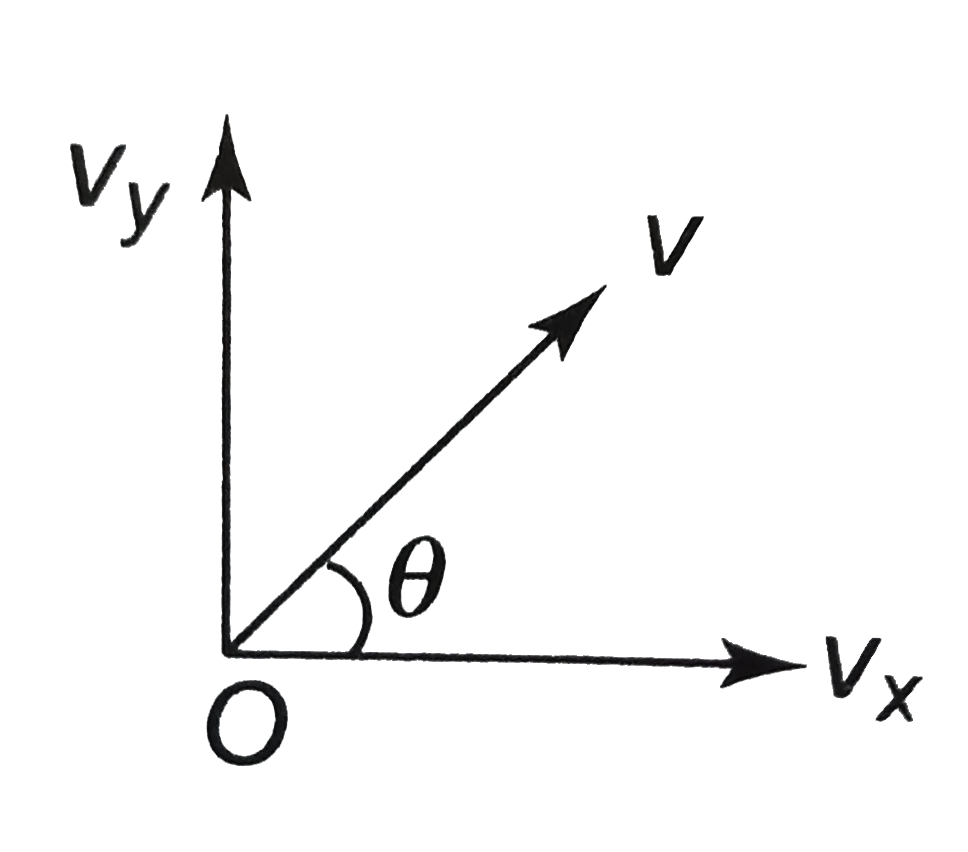A particle moves in the xy plane with a constant acceleration ω directed along the negative y-axis. The equation of motion of particle has the form y=cx−dx2, where c and d are positive constants. Find the velocity of the particle at the origin of coordinates.
Proceed as in the previous problem, here ω=g
=√ω(1+c2)2d,θ=tan−1(c)
OR
y=cx−dx2
dydt=cdxdt−d.2xdxdt
vy=cvx−2dxvx
dvydt=cdvxdt−2d[xdvxdt+vx.dxdt]
ay=c.ax−2d[xax+v2x]
ax=0,ay=−ω
−ω=−2dv2x⇒vx=√ω2d (indepedent of x)
vy=cvx−2dxvx
At origin,
x=0,vy=cvx=c√ω2d
v=√v2x+v2y
=√ω2d+c2ω2d=√ω(1+c2)2d
tanθ=vyvx=c⇒=θta−1(c)

Topper's Solved these Questions
Similar Questions
A particle moves in the plane x y with constant acceleration a directed along the negative y-axis. The equation of motion of the particle has the form y=k1x−k2x2, where k1 and k2 are positive constants. Find the velocity of the particle at the origin of coordinates.
View SolutionA particle moves in the plane xy with constant acceleration 'a' directed along the negative y-axis. The equation of motion of the particle has the form y=px−qx2 where p and q are positive constants. Find the velocity of the particle at the origin of co-ordinates.
View Solution
Knowledge Check
- Question 1 - Select One or More
A particle moves in the xy plane with a constant acceleration 'g' in the negative-direction. Its equqaiton of motion is y=ax−bx2, where a and b are constants. Which of the following are correct?
AThe x-compound of its velocity is constant.BAt the origin, the y-compound of its velocity is a √g2b.CAt the origin, its velocity makes an angle tan−1 (a) with yeh x-axis.DThe particle moves exactly like a projectile. - Question 2 - Select One
A particle moves in a plane with constant acceleration in a direction different from the initial velocity. The path of the particle will be
AA straight will beBAn arc of a circleCA parabolaDAn ellipse - Question 3 - Select One
A particle moving along the X-axis executes simple harmonic motion, then the force acting on it is given by
where, A and K are positive constants.A−AkxBAcoskxCAexp(−kx)DAkx
A particle moves in the plane xy with constant acceleration a directed along the negative y-axis. The equaiton of motion of the particle has the form y=px−qx2 where p and q are positive constants. Find the velocity of the particle at the origin of corrdinates.
View SolutionA particle moves in the plane xy with constant acceleration 'a' directed along the negative y-axis. The equation of motion of the particle has the form y=px−qx2 where p and q are positive constants. Find the velocity of the particle at the origin of co-ordinates.
View SolutionA particle moves in the x-y plane with constant acceleration α directed along the negative direction of the y-axis.the equation of the trajectory of the particle is y=ax-bx2, where a and b are constants. Find the velocity of the particle when it passes through the origin.
View SolutionA particle moves uniformly with speed v along a parabolic path y=kx2, where k is a positive constant. Find the acceleration of the particle at the point x = 0.
View SolutionA particle movesin the X-Y plane with a constasnt acceleration of 1.5ms2 in the direction making an angle of 370 with the X-axis.At t=0 the particle is at the orign and its velocity is 8.0 m/s along the X-axis. Find the velocity and the position of the particle at t=4.0 s.
 View Solution
View Solution

